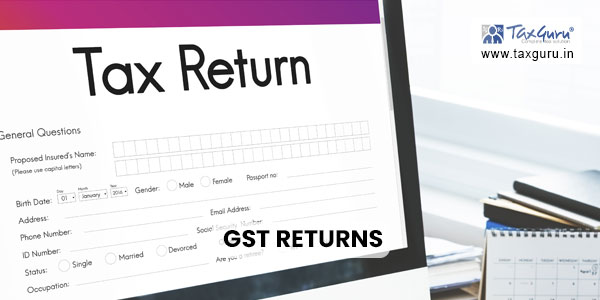Discover what GST returns are and explore the various types of GSTRs (Goods and Services Tax Returns) under the GST regime in India. Learn when to use each GSTR for seamless tax compliance.
What is GST returns. How many types of GSTr are there? When do I use each one?
GSTRs (Goods and Services Tax Returns) are the tax returns that taxpayers in India need to file under the GST (Goods and Services Tax) regime. GST is a single indirect tax system that was implemented in India from 1st July 2017, replacing multiple indirect taxes such as VAT, Service Tax, and Excise Duty.
Under the Goods and Services Tax (GST) regime in India, businesses are required to file various types of returns called GSTRs (Goods and Services Tax Returns). Here are the different types of GSTRs and when to use each one:

GSTR-1: This return contains details of all outward supplies made by the taxpayer during a specific period. It needs to be filed by the 11th of the following month.
GSTR-2A: This is an auto-generated return that shows the inward supplies received by the taxpayer from various suppliers during a specific period. It is generated on the 12th of the following month.
GSTR-2: This return contains details of all inward supplies received by the taxpayer during a specific period. However, the filing of GSTR-2 has been suspended by the government until further notice.
GSTR-3B: This return is a monthly summary of all outward and inward supplies made by the taxpayer during a specific period. It also contains details of the taxes paid and the input tax credit claimed. It needs to be filed by the 20th of the following month.
GSTR-4: This return is filed by taxpayers who have opted for the Composition Scheme. It contains details of all the supplies made during a specific period. It needs to be filed on a quarterly basis by the 18th of the month following the quarter.
GSTR-5: This return is filed by non-resident taxpayers who are registered under GST and carry out business transactions in India. It contains details of all supplies made during a specific period. It needs to be filed by the 20th of the following month.
GSTR-6: This return is filed by Input Service Distributors (ISDs) who receive invoices for input services and distribute the credit of the taxes paid to their units. It needs to be filed by the 13th of the following month.
GSTR-7: This return is filed by taxpayers who are required to deduct tax at source (TDS) under GST. It contains details of all the supplies made during a specific period and the amount of TDS deducted. It needs to be filed by the 10th of the following month.
GSTR-8: This return is filed by e-commerce operators who collect taxes on supplies made by the sellers on their platform. It contains details of all supplies made during a specific period and the amount of tax collected. It needs to be filed by the 10th of the following month.
GSTR-9: This return is an annual return that is required to be filed by all taxpayers registered under GST.
GSTR-10: This return is used to report the details of a taxpayer who has cancelled his GST registration.
*****
The author is a GST and Income Tax Practisioner and can be contacted at 9024915488.





